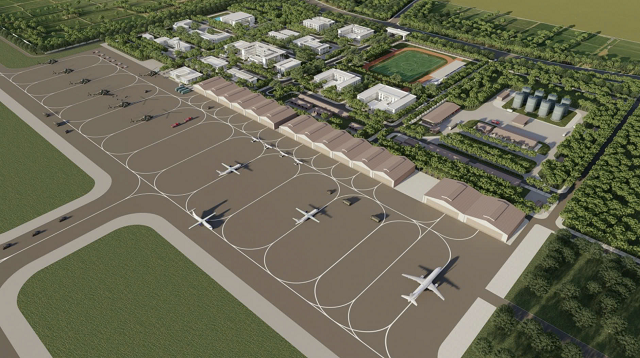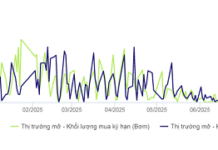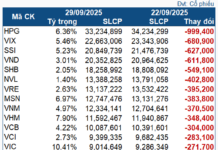The Ministry of Construction has recently approved adjustments to the planning of the Gia Binh International Airport for the period of 2021-2030, with a vision towards 2050.
Gia Binh Airport is designated as an international airport, serving both civil and security-defense purposes. The planning objective for the period of 2021-2030 is to achieve an airport classification of 4E (according to ICAO standards), with a capacity to serve approximately 30 million passengers per year and handle 1.6 million tons of cargo annually. It will be capable of accommodating aircraft such as the B777, B787, A350, and A321, along with other special-purpose aircraft. By 2050, the capacity is targeted to increase to 50 million passengers per year and 2.5 million tons of cargo.
The total land requirement for the Gia Binh International Airport in this planning amounts to nearly 1,960 hectares. This includes over 957 hectares for civil aviation infrastructure and more than 927 hectares for shared airfield infrastructure. Additionally, over 75 hectares of land will be managed by the Ministry of Public Security for security purposes.
The airport design includes two phases of apron expansion, providing 81 aircraft parking positions before 2030 and 123 positions by 2050. The passenger terminal is planned to the northeast of the VIP terminal, initially serving 30 million passengers and then expanding to accommodate up to 50 million passengers annually. The cargo terminal will be located east of the passenger terminal, ensuring a capacity of 1.6 million tons for the period of 2021-2030 and increasing to 2.5 million tons of cargo per year by 2050.
Notably, the VIP terminal, dedicated to serving special aircraft, will be separately located in the southwest area of the passenger terminal, occupying over 5 hectares of land.
The Ministry of Construction has requested the People’s Committee of Bac Ninh province to review and update the planning contents into the local planning and related planning. Additionally, they should complete the planning and investment in the traffic route connecting the airport with the capital city of Hanoi and the main access route to ensure the exploitation and connectivity of Gia Binh International Airport.

Due to the limited airspace capacity, increasing the capacity of Gia Binh will not increase the common airspace capacity, but instead require a corresponding reduction in Noi Bai’s capacity.
|
A key factor in this planning is the proximity of Gia Binh Airport to Noi Bai International Airport, with a distance of approximately 43km between them. Since both airports share the same controlled airspace, increasing the capacity of Gia Binh will help reduce the load on Noi Bai, and a redistribution of traffic between the two airports will be necessary.
According to the Vietnam Aviation Authority, adjusting the capacity of Gia Binh Airport requires a corresponding adjustment in the capacity of Noi Bai Airport. Specifically, for the period of 2021–2030, Gia Binh is planned to handle 30 million passengers per year, while Noi Bai will maintain a capacity of 35 million passengers. By 2050, Gia Binh is expected to serve 50 million passengers, while Noi Bai is projected to handle around 60 million passengers annually.
These adjustments will lead to changes in the total land area used in the airport system and a re-estimation of investment costs. Currently, the investment cost for the nationwide airport system up to 2030 is estimated at VND 443,000 billion. However, this figure needs to be updated to include the Gia Binh Airport.
|
In Decision No. 408/QD-BXD dated April 11, 2025, the Ministry of Construction approved adjustments to the planning of Gia Binh International Airport, setting a design capacity of approximately 5 million passengers per year for the period of 2021-2030 and a vision of 15 million passengers per year by 2050. The land requirement for this period and the vision towards 2050 was estimated at 408.5 hectares. Subsequently, the Ministry of Construction issued documents to initiate procedures for adjusting the planning of the nationwide airport and airfield system for the period of 2021-2030, with a vision towards 2050, following a streamlined process to adjust and supplement the Gia Binh International Airport to meet the target capacity of 30 million passengers by 2030 and 50 million passengers by 2050 as per the current plan. |
– 09:49 01/08/2025
The Forgotten Airport: Reviving a 74-Year-Old Gem to Welcome 2 Million Passengers Annually
The airport, nestled in the largest province of Northern Vietnam and a fixture since its construction in 1950, is set for a grand redevelopment in 2025.
Proposed Upgrade to Cat Bi Airport’s Capacity to 13 Million Passengers Annually
The proposed expansion of Cat Bi International Airport is an exciting development for Vietnamese aviation. With a vision for 2050, the airport aims to significantly increase its capacity, serving an impressive 13 million passengers and a substantial 250,000 tons of cargo annually by 2030. This ambitious plan, proposed by the Civil Aviation Authority of Vietnam, underscores the country’s commitment to enhancing its aviation infrastructure and establishing Cat Bi as a prominent aviation hub.










































